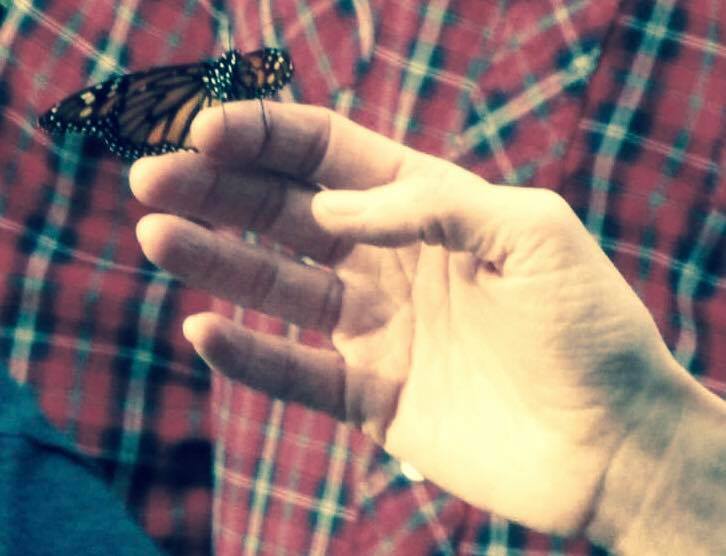If, as the thesaurus suggests, hope is a motion opposite of despair, then today’s hope is grieving.
For when the morning’s news is notice that, from Tasmania to California, kelp forests are being replaced by sea urchin barrens (Alastair Bland via Yale Environment 360, November 20, 2017) due to warming waters, a splitting sadness of this intangible loss that is a dying ocean is invoked. Unexpressed, as in to be unrelieved, this sadness gets added to the collection of grievances in a body’s burden. Grievances that include children mercilessly killed when they run and trees because they cannot.
Unexpressed, this sadness does nothing to stop the grievances from continuing. And this is why I am wary of any other professed hope. Hope, like despair, can become fantastic, all-consuming, unreal. This hope as grieving is an activity that keeps me real. With awareness of children burned alive in boats meant to rescue them from an oil spill, this hope as grieving is what informs my decision to refrain from flying across seas on a whim even when that whim allows the possibility to engage with others in person to address this hope. With awareness of albatross babes who starve on bellies full of plastic, this hope as grieving is what compels me to pick up every tiny piece that I see lying on the ground.
This hope as grieving is why I want to throw all of me into honoring the chronic grief known only to a mother who has carried a child in her womb and lived to bury this child in the ground, the womb of all wombs. And, the power of a mother’s grieving is why I want to infuse this hope into how the Anthropocene is understood and described. Thus, lived. To encourage a whole and healing perspective on the Anthropocene: “a proposed epoch dating from the commencement of significant human impact on the Earth’s geology and ecosystems, including, but not limited to, anthropogenic climate change” (Wikipedia), extensively storied in simple terms as the age humans destroyed themselves and everyone else living – the end.
To encourage this whole perspective, I’ve crafted this description of the Anthropocene as I see the era:
Anthropocene: The age in which human population has grown to the degree that the trauma in denying right relationship between mother and child can no longer be ignored and, so, right relationship is being restored.

Offering description of the Anthropocene in present time within the context of original wounding – severance from the mother – impregnates this moment with every moment’s true potential for healing because the original wound is unavoidable, can be healed, and has traditionally been recognized and resolved. I foremost want to encourage this healing perspective of the Anthropocene because every child is gifted with the capacity to dream themselves and their future into existence. And I can imagine no graver an injustice than to serve a child hopelessness when hope is what brings gestating potential to fruition.
Hope as grieving is the call to action implicit in Generative Memorials, a cooperative effort aligned with Remembrance Day for Lost Species. As the age of isolated self-interest ends, Generative Memorials invite open displays of grief and celebrate devotion to collective well-being. These living memorials are rooted in the understanding that birth, not death, is the ultimate sacrifice. That death is a part of the life cycle that inspires a sorrow equivalent to the joy in the child’s birth. And that death’s regenerative peacekeeping potential goes unfulfilled when this pure sorrow goes unexpressed.
Hope today, as always, is grieving fully that which can be lost.
Note: ‘A Hope-Infused Anthropocene’ is part of a call to action included at the close of Megan’s forthcoming poetry collection, anticipated 2018. For more on Generative Memorials, please visit Grief & Generation at Extinction Witness.
Photos by Mary Ann Blackwell, courtesy of Extinction Witness
